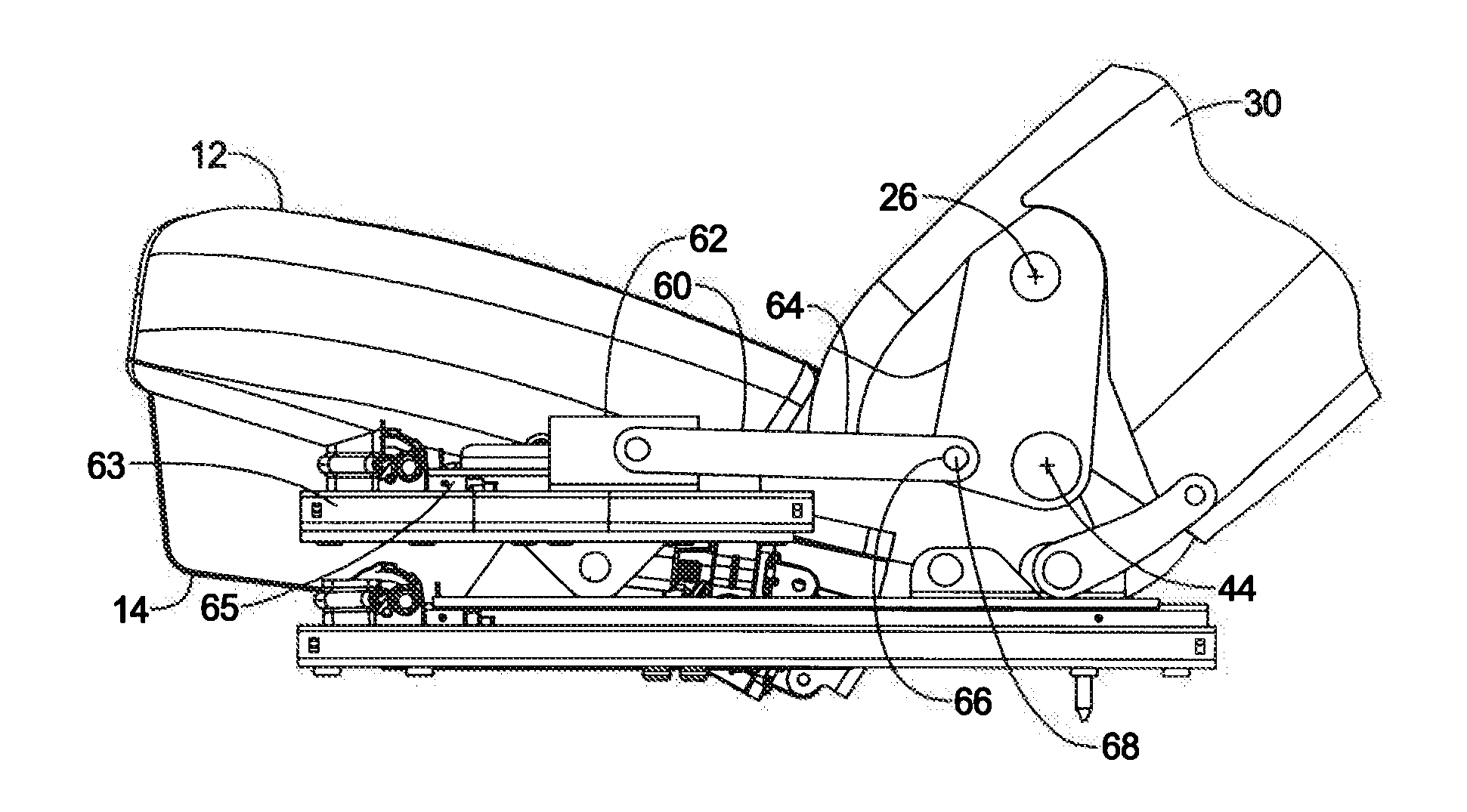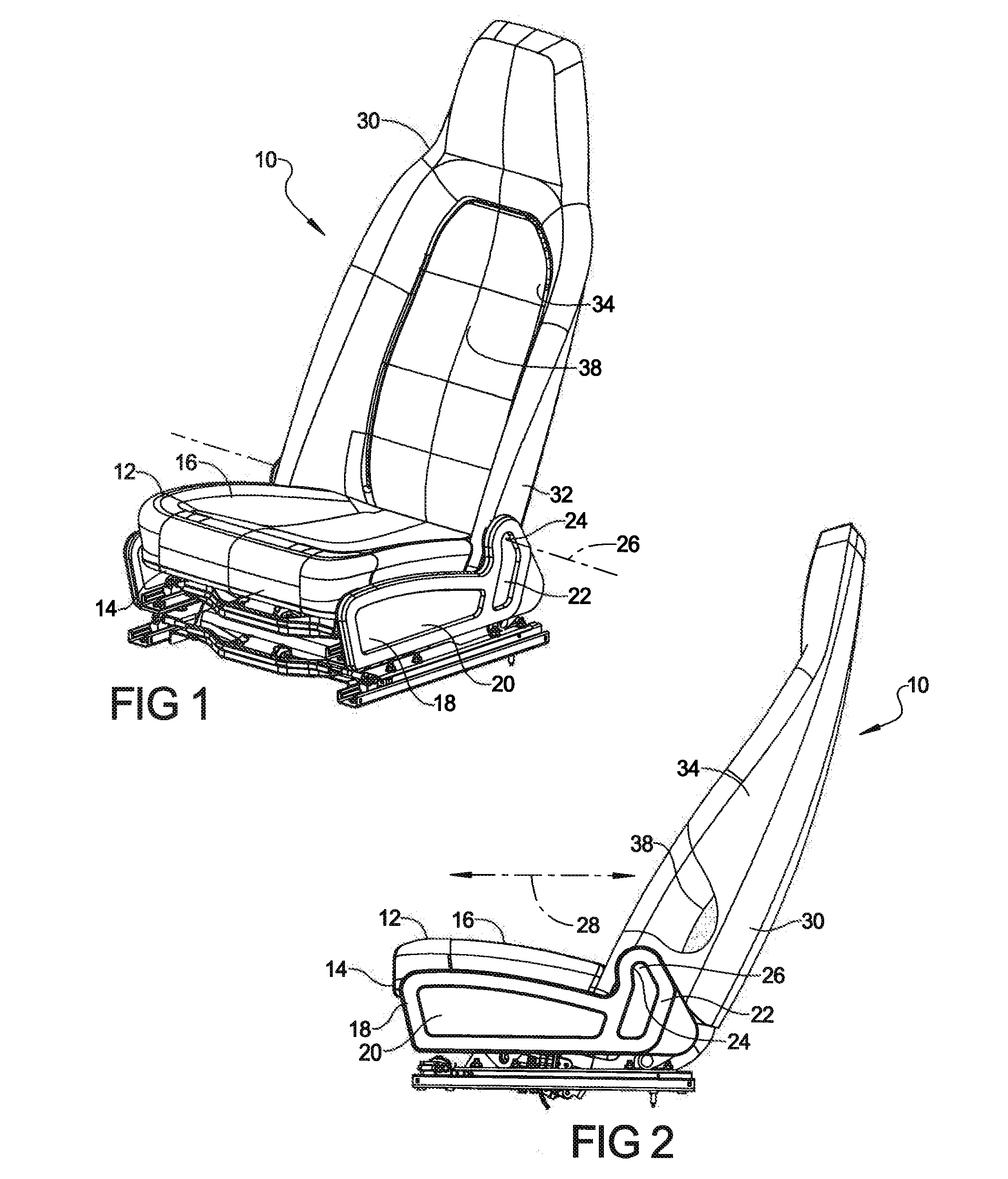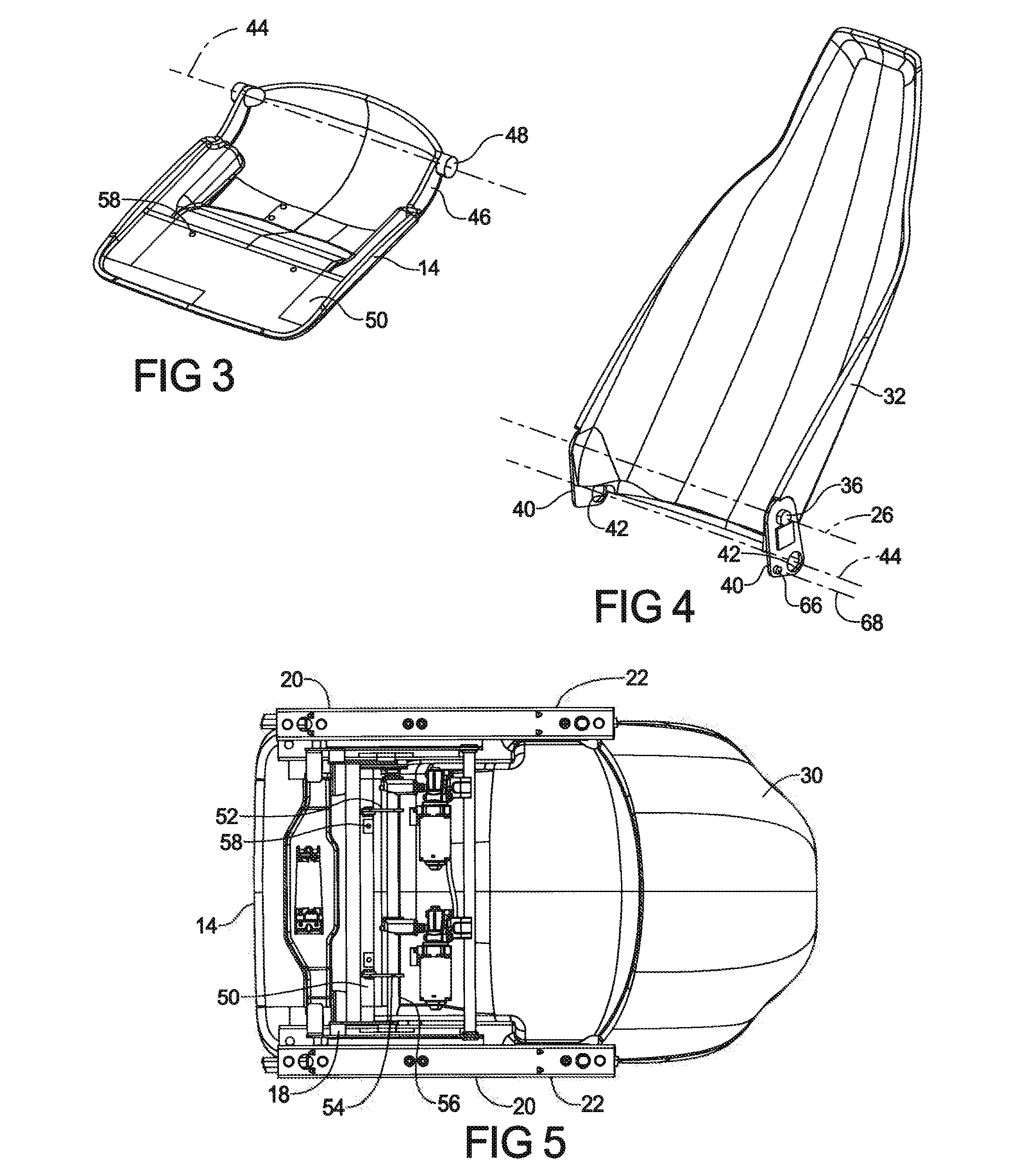Reclining seat assembly
a seat and assembly technology, applied in the field of reclining seats, can solve the problems of generating aesthetically-less-desirable gaps and pivoting, and achieve the effects of increasing the knee room of the rear seat passenger, maximizing aesthetics, and increasing the foot spa
- Summary
- Abstract
- Description
- Claims
- Application Information
AI Technical Summary
Benefits of technology
Problems solved by technology
Method used
Image
Examples
Embodiment Construction
[0018]Referring to FIGS. 1-5, a first exemplary reclining seat assembly 10 for a vehicle includes a bottom seat (hereinafter “seat 12”) including a seat pan 14 and seat cushion 16 supported atop a seat frame 18. The seat frame 18 includes side members 20 whose raised rear portions 22 include a first pair of transversely-aligned bores 24 with which to define a backrest pivot axis 26 that, in the case of a forward-facing vehicle seat assembly, is generally perpendicular to the nominal longitudinal axis 28 of the vehicle.
[0019]A seat back or backrest 30 including a backrest frame 32 and backrest cushion 34 is supported on the seat frame 18 for pivoting movement about the backrest pivot axis 26 by a pair of complementary projections 36 on the backrest frame 32 that are pivotally received within the seat frame's side member bores 24. As best seen in FIGS. 1 and 2, the backrest pivot axis 26 as defined by the side members 20 is located relatively forward of the backrest cushion's central ...
PUM
 Login to View More
Login to View More Abstract
Description
Claims
Application Information
 Login to View More
Login to View More - R&D
- Intellectual Property
- Life Sciences
- Materials
- Tech Scout
- Unparalleled Data Quality
- Higher Quality Content
- 60% Fewer Hallucinations
Browse by: Latest US Patents, China's latest patents, Technical Efficacy Thesaurus, Application Domain, Technology Topic, Popular Technical Reports.
© 2025 PatSnap. All rights reserved.Legal|Privacy policy|Modern Slavery Act Transparency Statement|Sitemap|About US| Contact US: help@patsnap.com



